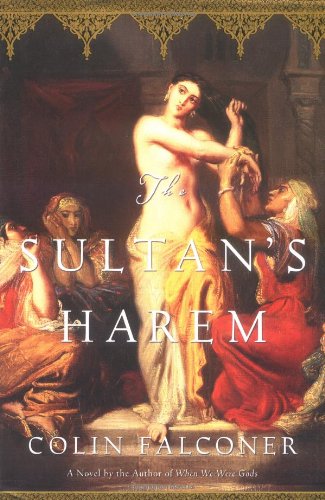The Sultan’s Harem
Previously pub. in the UK in 1992 as Harem, out of print
Colin Falconer can write; I have reviewed him in this space before. That was for Feathered Serpent, about the Spanish conquest of Mexico: good but grim. The Sultan’s Harem, treating 16th century Turkey and especially the relationship between Suleyman the Magnificent and his wife Hürrem, is equally grim. The difference in my reaction to the two books cannot be that I don’t know about the darker side of the Ottoman Empire, having written a trilogy on the subject myself. This proprietary claim, however, may color my response.
I will avoid the game of “find the anachronism,” because Falconer’s treatment taught me one misstep in my own work to every one I found in his, and I am sympathetic to such failings when the overall research is so good. However, I found his claim of the Turkish harem as a place of enforced silence to be a complete misrepresentation. Silence enforced before the diwan out in the selamilik, yes. But every report I have heard gives rather the opposite impression of the institution that sometimes numbered hundreds if not thousands of women for whom music, dance and conversation must have been central forms of amusement.
Maybe length constraints caused material to be cut in the editing process. If some scenes were never written – such as a scene very early where we might be allowed to get a good fix on Hürrem’s life before her capture to help explain her thirst for revenge – they ought to have been.
Falconer offers plenty of the western harem books’ requisite kinky sex, drugs, lolling around eating bonbons by all and sundry, scenes in the bath, and homosexuality. But my biggest complaint was that grimness. I had to reach at least page seventy before I found a character with whom I could sympathize. I turned the pages like mad although not because it was a gripping read. I couldn’t wait for the nasty characters to kill each other already.










